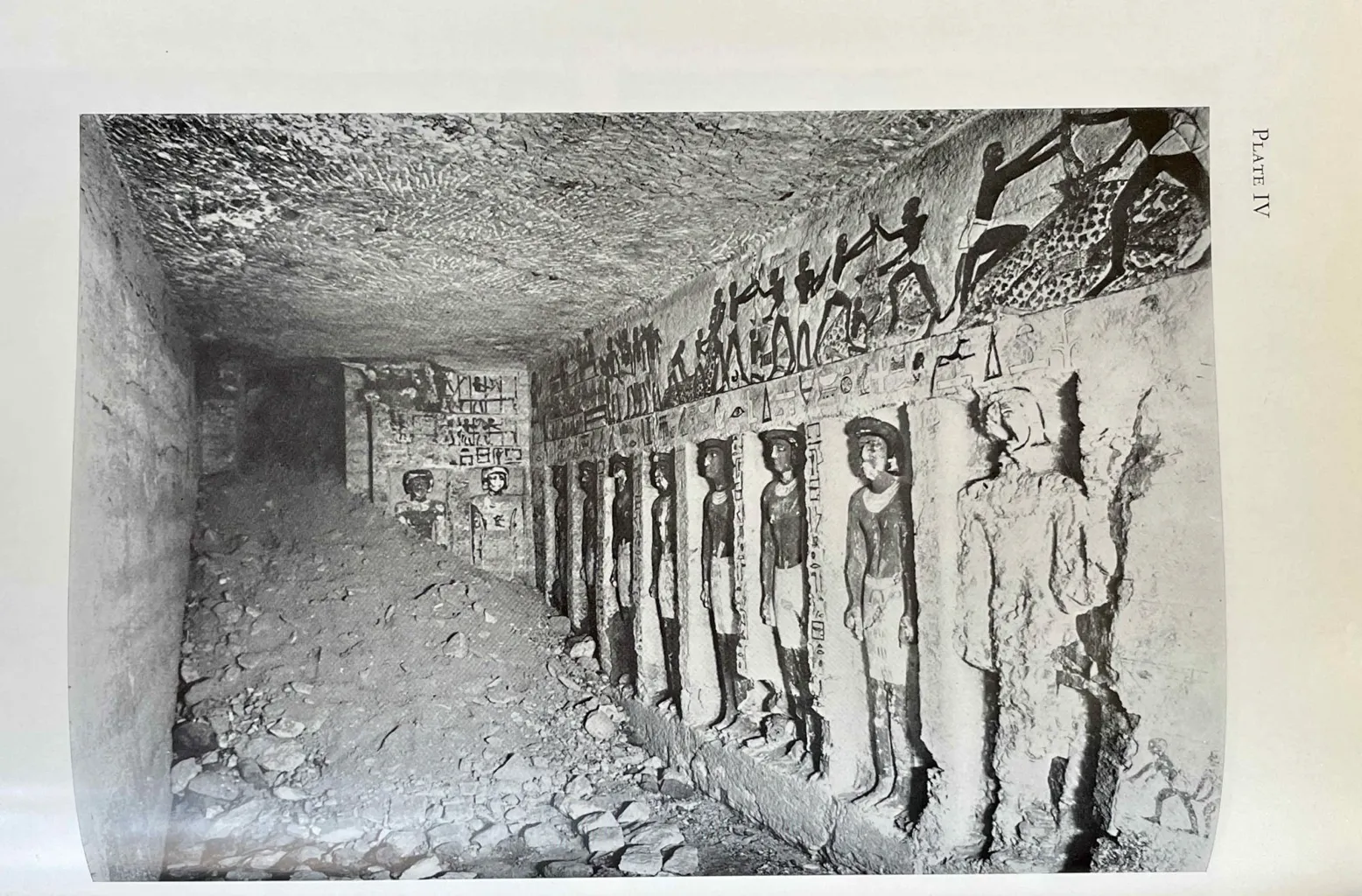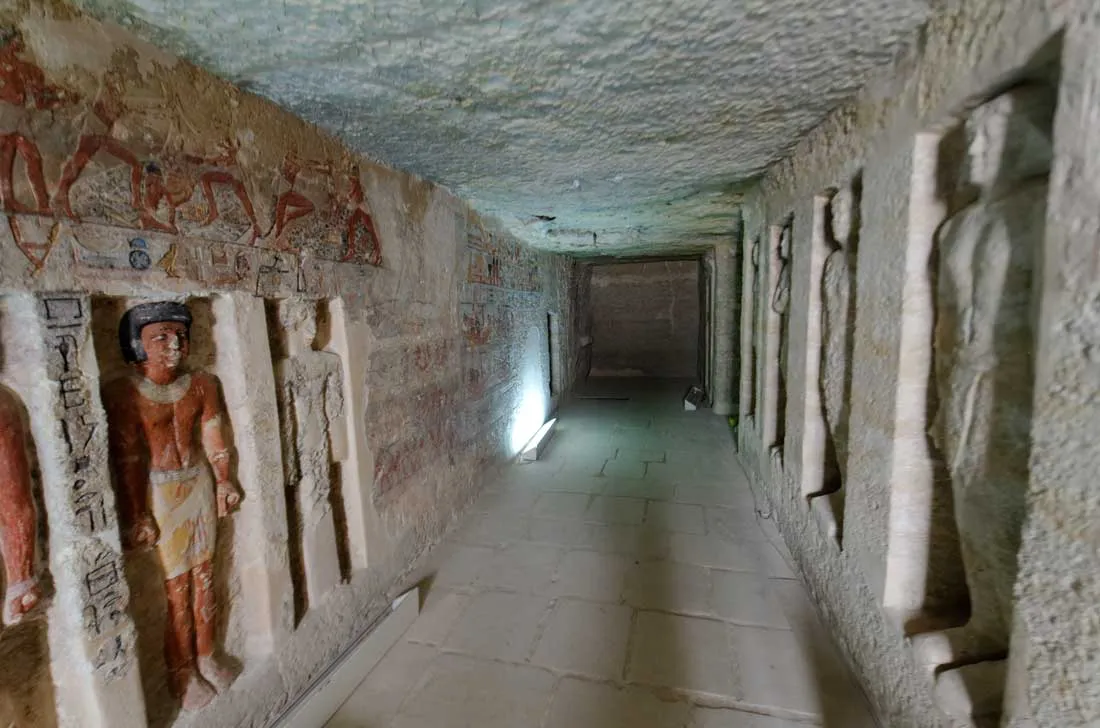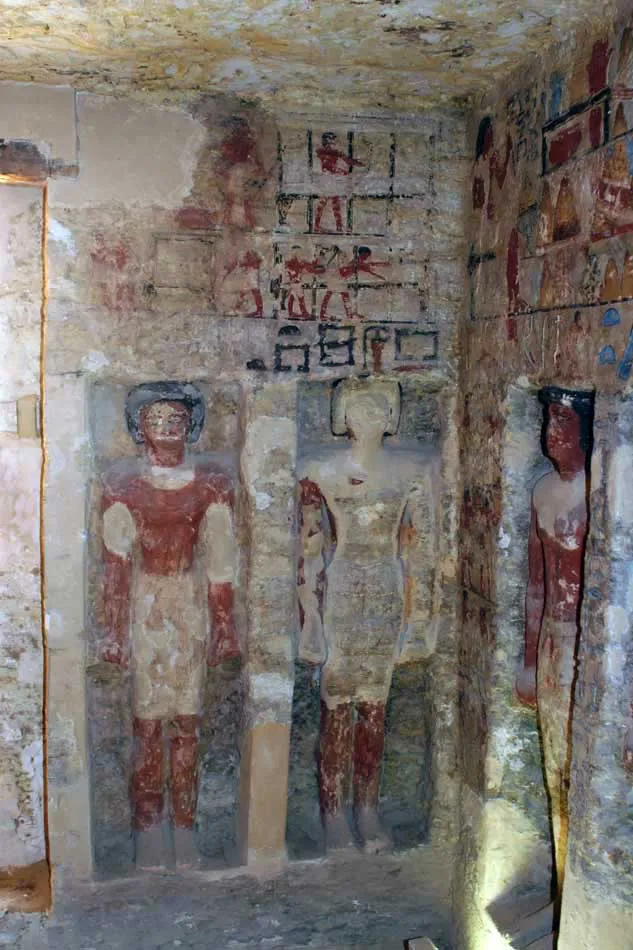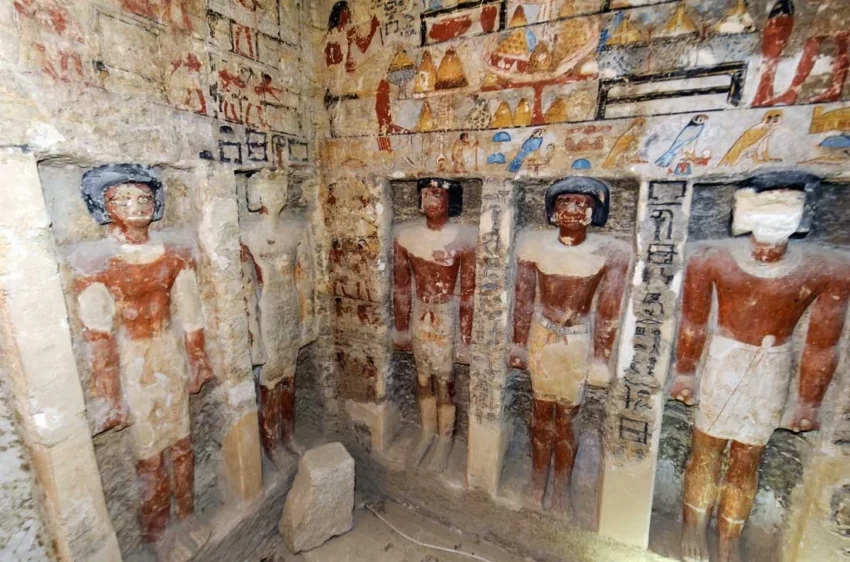The Tomb of Irukaptah: A Window into Old Kingdom Egypt
Located within the vast necropolis of Saqqara lies the Tomb of Irukaptah, also known as Khenu. This remarkable site offers a captivating glimpse into the life and times of an ancient Egyptian official. While listed amongst “mastabas” – tombs featuring an above-ground structure – Irukaptah’s final resting place is entirely subterranean, showcasing a unique variation in Old Kingdom burial practices.
Get your dose of History via Email

Unveiling a Hidden Gem: Location and Discovery
Discovered in 1940 by Abd el-Salam Mohammed Hussein, Irukaptah’s tomb resides south of the causeway leading to the pyramid of King Unas. It’s part of a complex of eleven burials, each whispering tales of lives past. Irukaptah’s titles, including “Master Butcher of the Great House,” earned his tomb the nickname “Tomb of the Butchers,” highlighting a profession not often associated with grand burials.
A Chapel Carved in Stone: Structure and Features
Irukaptah’s tomb isn’t a towering mastaba but a chapel meticulously carved directly into the cliff face. Stepping inside, one encounters a remarkable sight: fourteen statues of Irukaptah himself, each in various stages of completion. These life-sized figures stand out due to their exceptionally well-preserved polychromic colors, a rare find from the Old Kingdom period.

A Place in History: Dating and Political Context
The tomb dates back to the late 5th Dynasty, a period spanning roughly from 2500 to 2350 BC. This era, under the reigns of kings like Menkauhor or Djedkare, witnessed significant changes in Egypt. The rise of non-royal officials like Irukaptah and the transformation of Egypt into a centralized bureaucratic state marked a turning point.
Shifting Beliefs: Religious Changes
The 5th Dynasty also saw a shift in religious beliefs. The cult of Osiris, the god of the underworld, gained prominence, replacing the pharaoh as the sole guarantor of life after death. Additionally, the worship of the sun god Re flourished, with the construction of solar temples adding to the evolving religious landscape. Re and Osiris were viewed as complementary forces: Re, the sun god, representing the day and the solar realm, while Osiris symbolized the night and the lunar world.

The Life of Irukaptah: Tomb Owner and His Family
Beyond his role as a butcher, Irukaptah held several intriguing titles, including “Royal Wab-Priest” and “the honored one before Ptah.” These suggest involvement in rituals and a connection to the powerful deity Ptah. Accompanying Irukaptah in the chapel are depictions of two women, believed to be his wives, and two sons named Ptahshepses.
Exploring the Tomb: General Information
The tomb is situated 9.5 meters below the level of the Unas causeway and can be accessed via a modern staircase. It boasts one of the largest courtyards within the complex, measuring over 13 meters from north to south. The real treasures lie within the chapel, where the directly carved statues and well-preserved decorations offer a window into Irukaptah’s life and the artistic styles of the Old Kingdom.

A Gateway to the Chapel: The Courtyard
The entryway to the tomb lies on the north wall, constructed from meticulously cut limestone blocks. The exact dimensions of the original entrance are unknown, but the current opening allows visitors a glimpse into the hidden world beyond. The courtyard itself is nearly oblong in shape and doesn’t bear any decorative elements.
Entering the Sacred Space: Entry into the Chapel
Carved directly into the cliff face, the south wall holds the entrance to the chapel. Stepping through this portal, one descends two steps, a modification from the original design. The chapel’s interior offers a sense of reverence, with a flat ceiling and walls adorned with decorations.
The Chapel’s Embrace: Interior of the Chapel
The sandy floor of the chapel has been replaced with cement slabs for preservation purposes. The ceiling maintains a consistent height of roughly 2.35 meters, and the chapel’s axis is slightly angled compared to the courtyard. Decorations on the walls range from raised reliefs to painted scenes, accompanied by minimal text detailing names, titles, and offerings made to the gods.

A Gallery of the Self: Decoration and Statues
The most striking feature of the chapel is undoubtedly the collection of fourteen statues depicting Irukaptah. Carved directly into the walls, these figures showcase exceptional detail and a remarkable preservation of color. Dressed in a simple loincloth and adorned with a necklace, the statues offer a standardized portrayal of Irukaptah, likely replicating his funerary image.
North Wall: Scenes of Daily Life
The north wall, measuring 2.25 meters wide, showcases a fascinating glimpse into the daily activities of the time. Divided into two registers, or horizontal sections, the upper portion depicts a scene bustling with life. Skilled artisans can be seen crafting beds and furniture, providing a window into the techniques and tools employed in ancient Egypt.
East Wall: A Tapestry of Offerings and Life
Moving to the east wall, which stretches an impressive 13.55 meters, we encounter a captivating narrative. This section can be divided into three distinct areas, each offering a unique perspective.
- The Realm of Statues: The northernmost section features a series of statue niches. These life-sized figures, similar to those on the north wall, depict Irukaptah standing regally, perhaps receiving offerings or overseeing daily tasks.
- Scenes in the Marshes: The central section takes an unexpected turn, transporting us to the vibrant Egyptian wetlands. Here, the artists have meticulously rendered scenes of hunting and fowling amidst the lush papyrus reeds. Boats laden with reeds and captured birds might be depicted, offering insights into the Egyptians’ relationship with the natural world and the resources they obtained from it.
- A Banquet Fit for Eternity: As we reach the southernmost section of the east wall, bordering the entry wall, the focus shifts to the afterlife. Here, we see Irukaptah depicted seated comfortably in front of a lavish offering table overflowing with food and drink. This scene serves as a symbolic representation of the deceased’s continued sustenance in the next life.

Conclusion: A Legacy in Stone
The Tomb of Irukaptah stands as a testament to the artistry and funerary practices of the Old Kingdom. The remarkably preserved statues, detailed decorations, and intricate scenes offer a captivating glimpse into the life and beliefs of an ancient Egyptian official. While not a high-ranking member of the nobility, Irukaptah’s well-appointed tomb reflects the growing importance placed on the afterlife for all members of Egyptian society during this pivotal era.
Sources:


